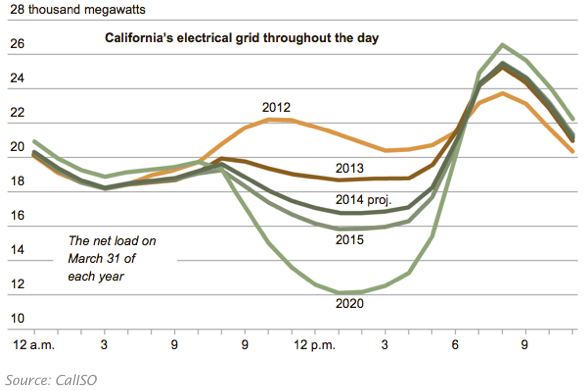Storing energy generated from your solar panels is an effective way to make your home more sustainable. By saving energy from the daylight hours you’ll be less dependent on the power grid and even protected in case of a blackout. Let’s take a look at the technology and some of the recent advances in the field of solar energy storage.
How It Works
The solar panels on your roof generate a DC current. In a regular setup, this energy gets sent directly to a solar inverter. This device is a mandatory part of any solar panel system. It takes the DC current and converts it into an AC current that can be used by the appliances in your home. When your energy needs are high, the entire DC current is used by your home.
If you have a battery storage system, your setup will work differently. When the appliances in your home are switched off and the electricity demands are low, some of the DC currents will be diverted from the inverter and used to charge your backup battery. This process is automatic and depends on how much energy your home requires at any given minute. Because of how it’s regulated, a battery backup system is a smart choice. It only charges when your home doesn’t require all the energy available from the solar panels.
When you’re planning the installation of your home battery system, you should figure out how much storage capacity you need. A single, average sized battery will provide your home with enough electricity for a single evening. If you want something more robust, you can install a battery bank. A battery bank is a system of connected batteries, and it may provide enough electricity to power your entire home for three to four days. While this is a nice feature, many people consider it unnecessary, especially since blackouts in America rarely last more than a few hours.
The Benefits of a Battery Backup System
The biggest benefit of a battery backup system is that you’ll always have a constant supply of energy to your home. This can be an advantage because electrical rates from the utilities tend to be higher in the evening. By saving power from the day you’ll be able to use it at night and save on your bill.
Additionally, if you have enough solar panels and a large enough battery bank, you’ll be able to use renewable energy around the clock. You’ll never have to pay for electricity from the grid, which is a major incentive for some people. Using 100% renewable energy may not be a feasible option for everyone, but it’s more affordable now than it was just ten years ago.
Different Kinds of Batteries
If you’re ready to install a solar energy battery backup system, then you have a choice to make. There are two different kinds of batteries on the market, and you want to make sure that you pick the one correct for your home.
Lead Acid Batteries
These have been used for decades in various applications. They’re the cheapest option and have a proven record in providing reliable storage to homeowners. However, you should be aware that you may need to perform maintenance on the system. Flooded lead-acid batteries will require you to “water” them, equalize the charge, and keep the terminals clean. This maintenance isn’t extensive, but it might not be a good fit if you’re away from home often or prefer to buy a “set it and forget it” system.
Two other types of lead-acid batteries: gelled electrolyte and absorbed glass mat (AGM) are maintenance free. These batteries are more expensive though and they also require voltage regulated chargers.
Lithium-Ion Batteries
These are the type of batteries that are found in your cellphone, and they’re the most common battery in the world. Lithium-ion batteries are more expensive than lead-acid batteries. However, they typically last longer and they have a high discharge and charge efficiency. That means they’ll be able to store the DC current from your solar panels more effectively, losing less energy in the process.
One of the most exciting new technologies on the market (or soon to be on the market) is the Tesla Powerwall lithium-ion battery. Much like an Apple product, this new solar storage battery combines form with function. It’s small, easy to install, comes with a ten-year warranty, and it’s even beautiful to look at.
Hopefully, this new battery from Tesla is just the start. In the coming years, we may see an influx of new solar energy storage batteries which will be more efficient and have a lower price tag. This will make it more feasible for homeowners to generate electricity from their solar panels and store it for the evening and night. If you still don’t have solar panels on your home and would like to find out more, contact Solar.com today and see how you can make your dream a reality!
Sources
http://bosch-solar-storage.com/the-battery/lithium-battery/
http://www.solarpowerworldonline.com/2015/08/what-is-the-best-type-of-battery-for-solar-storage/
http://www.teslamotors.com/powerwall
http://www.energymatters.com.au/residential-solar/battery-storage/
http://www.wholesalesolar.com/solar-information/deep-cycle-battery-info




